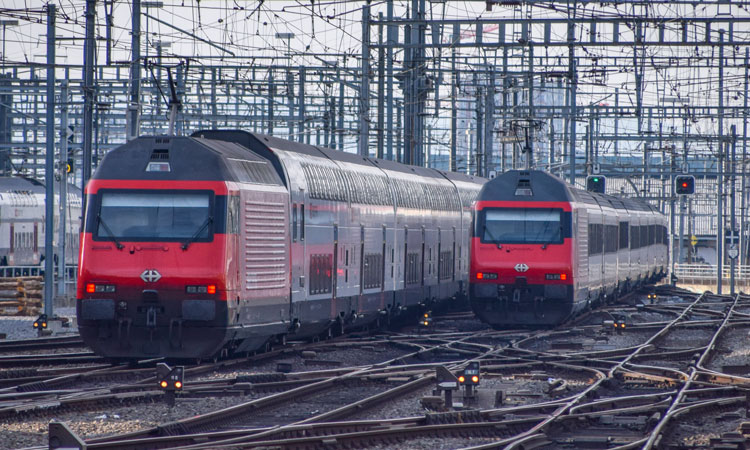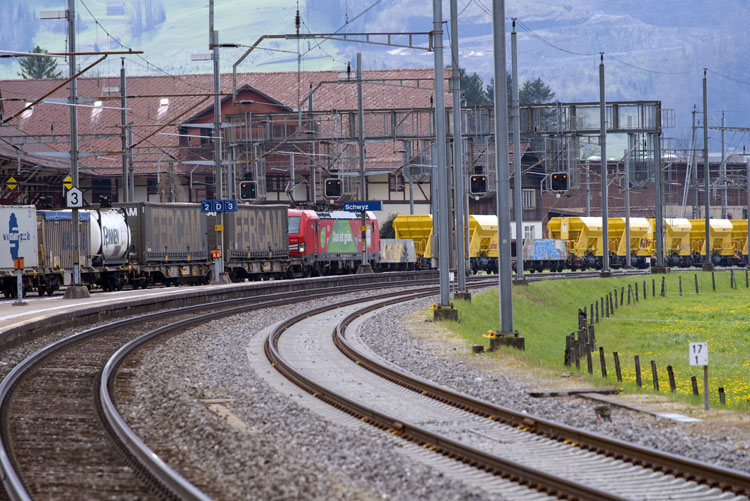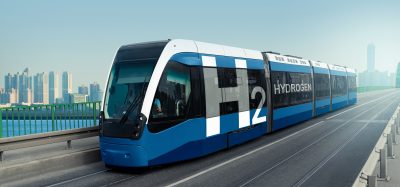How Switzerland wants to develop rail transport
Posted: 4 May 2023 | Peter Füglistaler | No comments yet
Dr Peter Füglistaler, Director of the Federal Office of Transport (FOT), discusses the ways in which both passenger and rail freight transport in Switzerland must be developed, including the need to expand infrastructure and the potential for Digital Automatic Coupling (DAC).


Dr. Peter Füglistaler. Credit: BAV Béatrice Devènes
Switzerland lies in the centre of Europe. The Alps separate the north and south of the country. Switzerland is small, densely populated and has a tight transport network. The public transport network, the railways in particular, has considerable public and political support.
This framework and these factors have shaped development strategies in both passenger rail transport and rail freight in the past and will continue to be important going forward.
Passenger rail transport
Faced with climate change and in view of increasing urban sprawl, we want to change direction in the development of our railways.
In Switzerland, we will need to change our strategy as we expand our infrastructure. Up to now, the main focus has been on eliminating bottlenecks and increasing frequency, i.e. the idea was that the railways should transport as many people and goods as possible.
This is now going to change.
Faced with climate change and in view of increasing urban sprawl, we want to change direction in the development of our railways.
Now the aim is for as many travellers as possible to switch to the railway, not for transport demand to be further boosted by an increased service (i.e. avoiding supply-induced demand).
Under the RAIL Outlook 2050 programme, rail services will be improved primarily on short and medium routes, for example with additional suburban rail services and upgrades to suburban stations. This approach takes account of the fact that the greatest potential for shifting to rail lies in the conurbations, in cross-border areas and in connections between regional centres and the conurbations. In specific terms, this means expanding suburban transport links (also beyond the country’s borders), improving long-distance train services at suburban stations and increasing new radial and tangential routes in conurbations.


Under the RAIL Outlook 2050 programme, Switzerland’s rail services are set to be improved.
Expanding rail infrastructure
In long-distance transport, rail infrastructure will be expanded primarily where it does not yet compete with road in terms of travel time. The aim here is to selectively reduce journey times.
Focusing our expansion strategy on short and medium distances is not popular with everyone, with many railway enthusiasts in Switzerland looking enviously across the borders to other countries at the high-speed trains connecting the major cities there. They would like similarly fast trains to run in Switzerland and advocate the construction of new high-speed lines. However, I am convinced that such a system is not suited to Switzerland as a small country, and that making passenger transport faster would run counter to Switzerland’s climate policy and spatial planning goals. The result would be more traffic and additional urban sprawl. The wrong incentives would be set, making commuting more attractive and encouraging people to travel further from home to their place of work.
Modal shift and rail freight
Switzerland has successfully pursued a modal shift policy in transalpine rail freight transport since 1994. The Federal Constitution stipulates that the number of domestic and foreign heavy goods vehicles travelling through the Swiss Alps should be reduced from 1.4 million in 2000 to 650,000 journeys per year. We are not there yet. However, the number of heavy goods vehicles has been reduced to well below one million, despite the strong growth in transport volume. If a range of accompanying measures had not been taken, today around 800,000 additional heavy goods vehicles would be crossing the Alps every year. Rail accounts for around 74% of the market share of freight transport through the Swiss Alps – considerably more than in neighbouring countries with similar topography.
While we continue to pursue this successful strategy for transalpine rail freight transport, an important strategic decision still needs to be taken regarding inland freight transport, i.e. within the borders of Switzerland.


The Federal Council has decided that inland rail freight transport in Switzerland is to be expanded.
Climate policy
Here, too, climate policy plays a role, as does Switzerland’s small size. The Federal Council has decided that inland rail freight transport is to be expanded, taking account of energy and climate policy goals and the importance of rail transport to Switzerland’s security of supply. The main form of inland rail freight transport is wagonload traffic. This is very complex and costly. Individual groups of wagons are collected from around 700 sidings and assembled in marshalling yards into entire trains for onward transport. As a result of the costs involved, SBB Cargo, which is responsible for wagonload traffic, is facing major financial challenges. Now we need to ask how we want to proceed in future.
Several options are currently being discussed. The first envisages a modernised framework for rail freight transport with comprehensive financial support from the federal government. The second focuses on competitive incentive instruments. However, this would result in important freight services shifting from rail to road. In the consultation procedure among the political parties, industry associations and cantons, the first option was met with significantly greater approval. The decision ultimately lies with the Swiss parliament.
Digital Automatic Coupling (DAC)
Whichever way the parliamentary decision goes, one thing is clear, both to us here in Switzerland and to many other countries in Europe, that there is currently a window of opportunity to modernise and digitalise rail freight transport in order to make it substantially more attractive, faster, more punctual and more reliable. In many EU countries as well as in Switzerland, Digital Automatic Coupling (DAC) is seen as a key instrument to achieve a quantum leap in rail freight transport. DAC allows automatic coupling of vehicles and their air brakes. This replaces the time-consuming manual process of coupling with screw coupling at sidings, assembly yards and marshalling yards. The second advantage is that, with DAC, train preparation is digitalised: trains are manoeuvred digitally via power and data lines. This means that manual documentation and inspection processes can be largely replaced.
DAC allows automatic coupling of vehicles and their air brakes. This replaces the time-consuming manual process of coupling with screw coupling at sidings, assembly yards and marshalling yards.
DAC has the greatest potential in wagonload traffic, in which thousands of wagons are shunted every day via sidings, assembly yards and loading facilities. The Swiss government therefore decided, as part of its proposal for the further development of rail freight transport, to provide investment contributions to companies switching to DAC.
As many freight trains operate across borders, a coordinated approach with neighbouring countries and the EU is essential in the switch to DAC. Switzerland is willing to lead the way with a technically coordinated solution. It will do everything in its power in European bodies to ensure that the switch also takes place in Europe by the set target – 2030.
Digitalisation opens up great new opportunities for rail freight. Let’s make the most of them!
Dr Peter Füglistaler has been Director of the Federal Office of Transport (FOT) since 2010. The FOT implements Swiss public transport policy. It is responsible for licensing, financing and safety supervision in rail transport, cable cars and chairlifts, buses and shipping. Before joining the FOT, Peter Füglistaler held various positions at Swiss Federal Railways (SBB).
Related topics
Cargo, Freight & Heavy-Haul, Digital Automatic Coupling (DAC), Digitalisation, Infrastructure Developments







